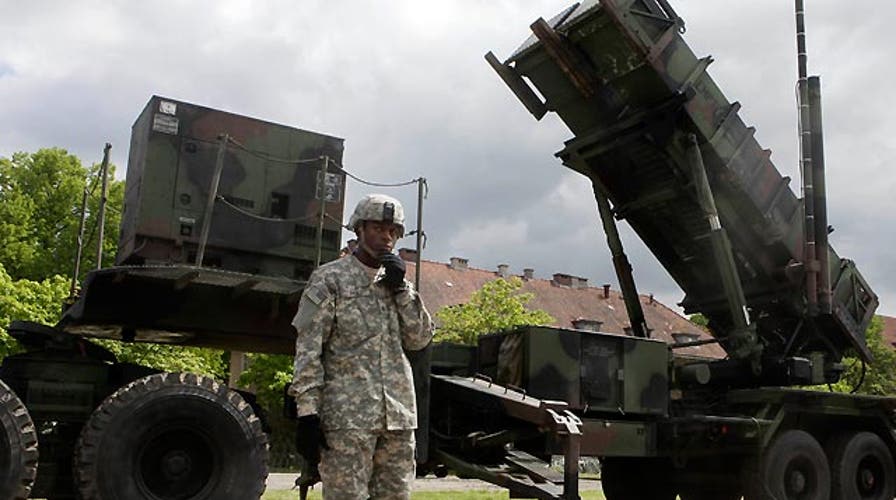BRUSSELS – NATO's expected decision Tuesday to provide Turkey with Patriot missiles returns the spotlight to an American-manufactured, anti-missile system that has undergone a series of renovations since entering service more than three decades ago.
The weapon was first used to defend Saudi Arabia and Israel in the 1991 Gulf War. It was deployed again during the U.S.-led invasion of Iraq in 2003. It has since become a defensive system of choice for a dozen countries worldwide, including the U.S. and five fellow NATO nations.
Here is a look at the Patriot's capabilities and record:
___
MANUFACTURER: Raytheon.
RANGE: About 100 miles (160 kilometers). Can reach altitudes of about 80,000 feet.
CAPABILITIES: Patriots are designed to target aircraft, tactical ballistic missiles, cruise missiles and drones.
HOW THEY WORK: Patriots come in batteries of several missiles that can be fired individually. They are guided to their targets by a tracking radar which is connected to computer systems, where military personnel can monitor them and decide which targets to engage. These monitoring stations don't need to be near the firing positions.
The Patriots are likely to be spread out to defend urban centers in southern Turkey. They are usually positioned so that they can cover a wider geographical zone, and wouldn't be deployed exactly on Turkey's border with Syria. This way, they have a longer response time for mid-air adjustments and can avoid violating Syria's airspace, which NATO has promised to respect for now.
Patriots are best against individual missiles. A deliberate attack involving multiple incoming strikes could overwhelm their capacity.
DEPLOYMENT HISTORY: The U.S. military initially claimed a success rate of 70 percent against Iraqi Scuds aimed at Saudi Arabia and 40 percent of those aimed at Israel during the first Gulf War. However, a congressional report later found that of 47 Patriot missiles fired at incoming Scuds, only four missiles were downed. On 25 Feb. 25, 1991, a Scud evaded a Patriot strike and scored a direct hit on a U.S. base in Dhahran, Saudi Arabia, killing 28 American soldiers. The military blamed a software error.
Twelve years later, the U.S. Army said Patriots intercepted all nine short-range battlefield missiles fired by the Iraqis. No Scuds were fired during that war. But the Patriots were also reported to have downed two allied jets — one American and one British — in friendly fire incidents during the conflict.
In the past, Patriots have struggled to counter poorly made missiles such as Iraqi Scuds and those Syria may include in its arsenal. These can wobble wildly in flight, making them harder to hit. Their inaccuracy also increases the target radius.
Newer designs are supposed to address previous Patriot shortcomings. They are also supposed to be more powerful, so that interceptions result in more missiles being destroyed immediately.

